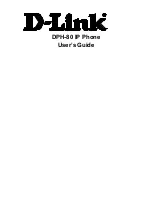
SAFETY
Studies have shown that these products generally do not work as
advertised. Unlike “hand-free” kits, these so-called “shields” may
interfere with proper operation of the phone. The phone may be
forced to boost its power to compensate, leading to an increase
in RF absorption. In February 2002, the Federal trade Commission
(FTC) charged two companies that sold devices that claimed to
protect wireless phone users from radiation with making false and
unsubstantiated claims. According to FTC, these defendants lacked a
reasonable basis to substantiate their claim.
11. What about wireless phone interference with medical
equipment?
Radiofrequency energy (RF) from wireless phones can interact with
some electronic devices. For this reason, FDA helped develop a detailed
test method to measure electromagnetic interference (EMI) of implanted
cardiac pacemakers and defibrillators from wireless telephones. This test
method is now part of a standard sponsored by the Association for the
Advancement of Medical instrumentation (AAMI). The final draft, a joint
effort by FDA, medical device manufacturers, and many other groups,
was completed in late 2000. This standard will allow manufacturers to
ensure that cardiac pacemakers and defibrillators are safe from wireless
phone EMI.
FDA has tested hearing aids for interference from handheld wireless
phones and helped develop a voluntary standard sponsored by the
Institute of Electrical and Electronic Engineers (IEEE). This standard
specifies test methods and performance requirements for hearing aids
and wireless phones so that that no interference occurs when a person
uses a “compatible” phone and a “compatible” hearing aid at the same
time. This standard was approved by the IEEE in 2000.
137
136
SAFETY
FDA continues to monitor the use of wireless phones for possible
interactions with other medical devices. Should harmful interference be
found to occur, FDA will conduct testing to assess the interference and
work to resolve the problem.
Updated July 29, 2003
For more information, please visit the FDA website at http://www.fda.
gov/cellphones.
EMERGENCY CALLS
Never rely solely upon your wireless phone for essential communications
(e.g., medical emergencies), if it can be avoided, since a wireless phone
requires a complex combination of radio signals, relay stations and
landline networks for its operation. Consequently, emergency calls
may not always be possible under all conditions on all wireless phone
systems. Your wireless phone, however, may sometimes be the only
available means of communication at the scene of an accident. When
making an emergency call, always give the recipient all necessary
information as accurately as possible. Never terminate an emergency
call until you have received clearance to do so.
FCC ENHANCED 911 (E911) RULES
Background
The Federal Communications Commission (FCC) requires wireless
carriers to transmit specific latitude and longitude location (Automatic
Location Identification = ALI) information as well as “911” calls to
Public Safety Answering Points (PSAPs) to identify the location of the
caller in case of emergency.









































